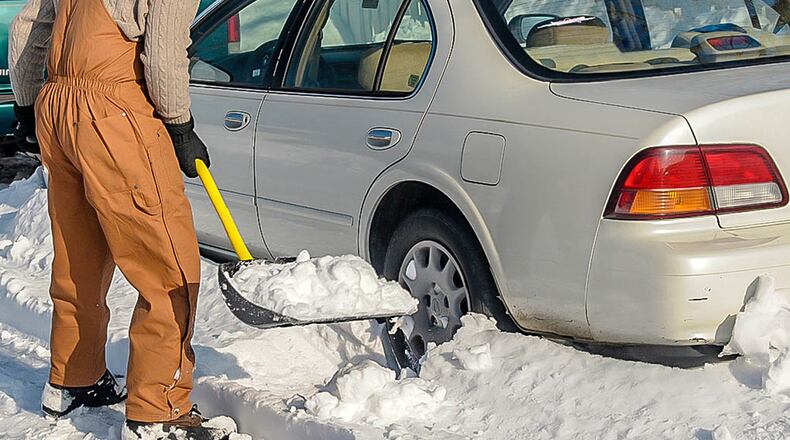If you have a gas-electric hybrid it’s even worse, with fuel efficiency declining by up to 34 percent. That’s because lower speeds are controlled by electric motors, not the gas engine, and thus it takes longer for the gas engine to warm up. Not only that, but battery performance decreases in cold weather, making it harder for your alternator to keep the battery charged. This also affects the performance of the regenerative braking system on hybrids, and shortens the overall driving range of electric vehicles.
And while this inconvenient truth gives you one more reason to despise winter, you may also wonder why it happens.
As the temperature tumbles, gasoline thickens and the air becomes denser. This less-than-optimal fuel-air mixture causes your car to consume more gasoline until the engine and its fluids warm up to its most efficient operating temperature.
“Well,” you say, “I have a heated garage.”
OK, that helps since it probably takes your car less time to warm up. But winter blends of gasoline also have slightly less energy per gallon than summer blends, so you’ll still guzzle more gas for your vehicle to perform as efficiently as it will six months from now. And if the fuel doesn’t get you, the air will. Since colder air is denser, it not only increases aerodynamic drag on your vehicle, it also lowers your vehicle’s tire pressure. As tires become under-inflated, rolling resistance increases, which in turn requires your car or truck to use more power to overcome it.
And, once it snows again, you have another culprit sabotaging fuel efficiency.
Icy or snow-covered roads not only decrease your tires’ grip on the road, causing your car to use more energy to provide grip, but they also typically lower driving speeds, usually below 40 mph, where your vehicle is less fuel efficient. And snow adds weight, requiring more fuel to overcome it. And so it pays to completely clean snow and ice off your car, truck or van. Also, clear your vehicle’s front air intake to ensure that the engine runs efficiently. Finally, if your vehicle has four-wheel drive and you don’t have to use it, don’t. Engaging four-wheel drive devours more fuel.
Of course, there are other things you can do to ensure your car runs as efficiently as possible in cold weather.
While you might be tempted to warm your car by letting it idle, auto manufacturers suggest doing this for no more than 30 seconds. Why? First of all, the engine warms up faster when it’s being driven. Secondly, idling returns a fuel economy rating of 0 mpg.
However, this doesn’t apply to a plug-in hybrid or electric vehicle. On those vehicles, preheating the cabin while they’re plugged into a charger can extend the vehicle’s range. Also, using the seat warmers instead of the cabin heater can save energy and extend range.
Be sure to check your tire pressure regularly, especially after a significant drop in temperature. And make sure that you’re using the correct type of oil recommended by the manufacturer for cold weather driving.
Also, removing excess items from the interior that you don’t need or use, as well as any exterior accessories, such as bike racks, will lighten your vehicle’s load, lessen weight and wind resistance, and save fuel.
Finally, it’s always a good idea to combine trips, especially in the winter. Doing this ensures that you’re not driving with a cold engine. And, although this seems obvious, park your vehicle in a warm garage if possible, or in a sunny spot. This helps increase the initial temperature of the engine and cabin.
You don’t have to like winter, but you have to love beating old man winter’s ice-cold grip on your wallet.
About the Author
